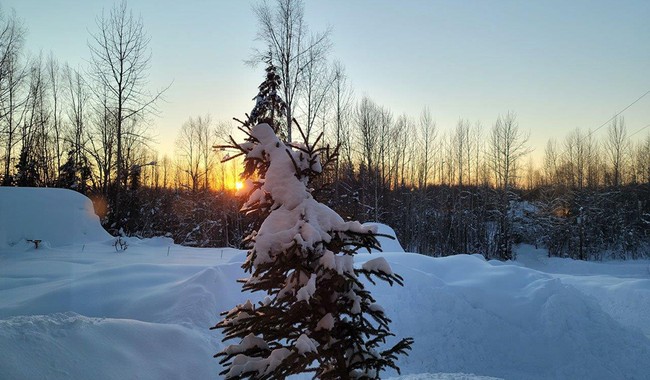
On Thursday evening, I drove down to Anchorage to pick up my wife at the airport as she was returning from visiting her family in the Lower 48. On that drive, when one arrives in Anchorage, you drive west on 6th Avenue, and this time I noticed that the big homeless Bidenville tent city across from Merrill Field airport appears to have been largely cleaned up. That’s probably for the best because not only was that tent city unsightly, with people sleeping on the ground and trash strewn about, but in Alaska, these encampments have the added feature of being veritable bear magnets – and both black bears and grizzlies are known to frequent the area. Just as a reminder, grizzlies in particular are no joke: they are 500-pound meat missiles that can rip the door off a Super Duty pickup, can smell a decaying sandwich from a mile away, and are not afraid of anything that walks on two or four legs.
Advertisement
Now, in a staggering display of belaboring the obvious, we learn that “unhoused” – homeless – people in Alaska are more likely to suffer from severe cold-related injuries than “housed” people, namely, people who sleep indoors.
Cold exposure injuries like frostbite and hypothermia are eight times more common for unhoused people in Alaska than those with secure housing, according to recent research by the Alaska division of epidemiology.
Riley Fitting, an epidemiologist with the state, said cold exposure injuries can be serious.
“Just because we’re in Alaska and we’re hearty, and we understand the winter, and we know things are cold, but we still go out and do things in the cold, it’s important to realize that not everybody can warm up,” Fitting said. “And if we can’t warm up, we’re at much higher risks of these lasting health outcomes.”
In other news, “unhoused” people in Tucson are at a higher risk of severe heat injuries. Also, the sun rises in the east, and water is wet.
Honestly, they paid someone to make this determination? Really?
He said about a quarter of cold exposure injuries were caused directly because people were unhoused. He also said the rate of cold injuries for unhoused people has increased over the past several years, likely because of recent harsh winters. But in harsh winters, people with homes aren’t similarly at higher risk of cold-induced injury.
Advertisement
So, people sleeping on the sidewalks of Anchorage, Alaska, are more likely to suffer from cold exposure injuries than people who sleep indoors, in a bed, under blankets? Gotcha. I never would have figured that out if an epidemiologist with the state of Alaska had not helpfully informed me. Heck, do you suppose this is true in other places? Could it be true that people sleeping on sidewalks or in doorways are more likely to suffer from exposure than people who sleep indoors?
See Related: Colorado County Posts ‘Handouts Don’t Help’ Signs at Intersections, Panhandlers Disappear
After reading this, the question arises, “And therefore, what?” Well, here’s the what:
Fitting said prevention can include community outreach and supplying cold weather equipment like blankets and hand warmers.
“Community outreach?” What does that even mean? Outreach how? To what end? And blankets and hand warmers? That’s the answer?
How about anti-camping legislation backed up with a municipal housing program, something like a barracks, where the people of the streets are required to go to stay clean and sober, to gain skills if necessary, so they can become actual productive citizens instead of street decorations? Because blankets and hand warmers aren’t solutions; they are enabling.
Advertisement
Winter is coming very soon to the Great Land. Last year, the city of Anchorage set a new record for the number of homeless people who died of exposure. This isn’t a problem that can be solved with blankets. Things have gotten out of hand; it’s time for some solutions more substantial than “community outreach.”
To paraphrase JD Vance, can these people even hear themselves?

